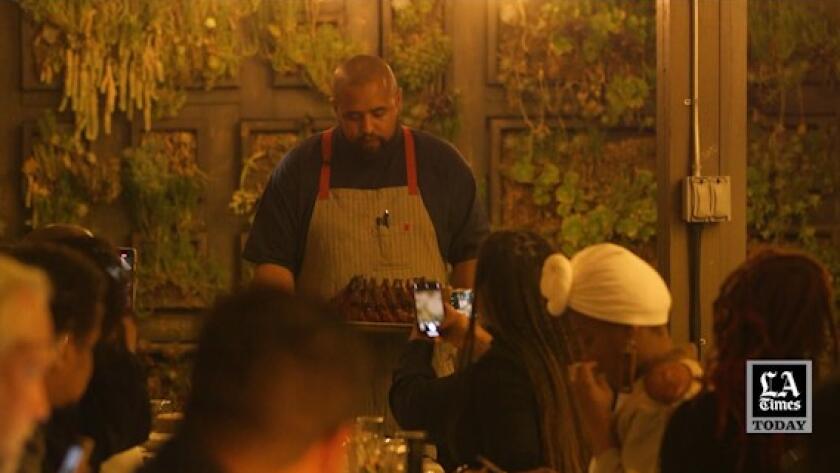
The history of American slavery is so weighty and dense that sometimes people like me — the descendants of enslaved Africans — try to avoid the topic.
So much has already been said and felt. What can one more book or Hollywood drama add? Why take another walk through a traumatic history?
Admittedly, I carried that heaviness into Hemings & Hercules, a dinner series inspired by the work of James Hemings and Hercules Posey, who were enslaved by Thomas Jefferson and George Washington, respectively.
The dinner series celebrating the work of “America’s first two celebrity chefs” was created by chef Martin Draluck at Culver City’s Hatchet Hall and has since moved to Post & Beam, the stylish Black-owned restaurant in Baldwin Hills where Draluck is now chef de cuisine.
Draluck, 36, says he fell in love with food at his family’s barbecue restaurant, Dem Bones on Santa Monica Boulevard in West Los Angeles. His grandfather Jim allowed him to bake the cornbread sometimes, and little Martin bused tables in exchange for pieces of sweet potato pie.
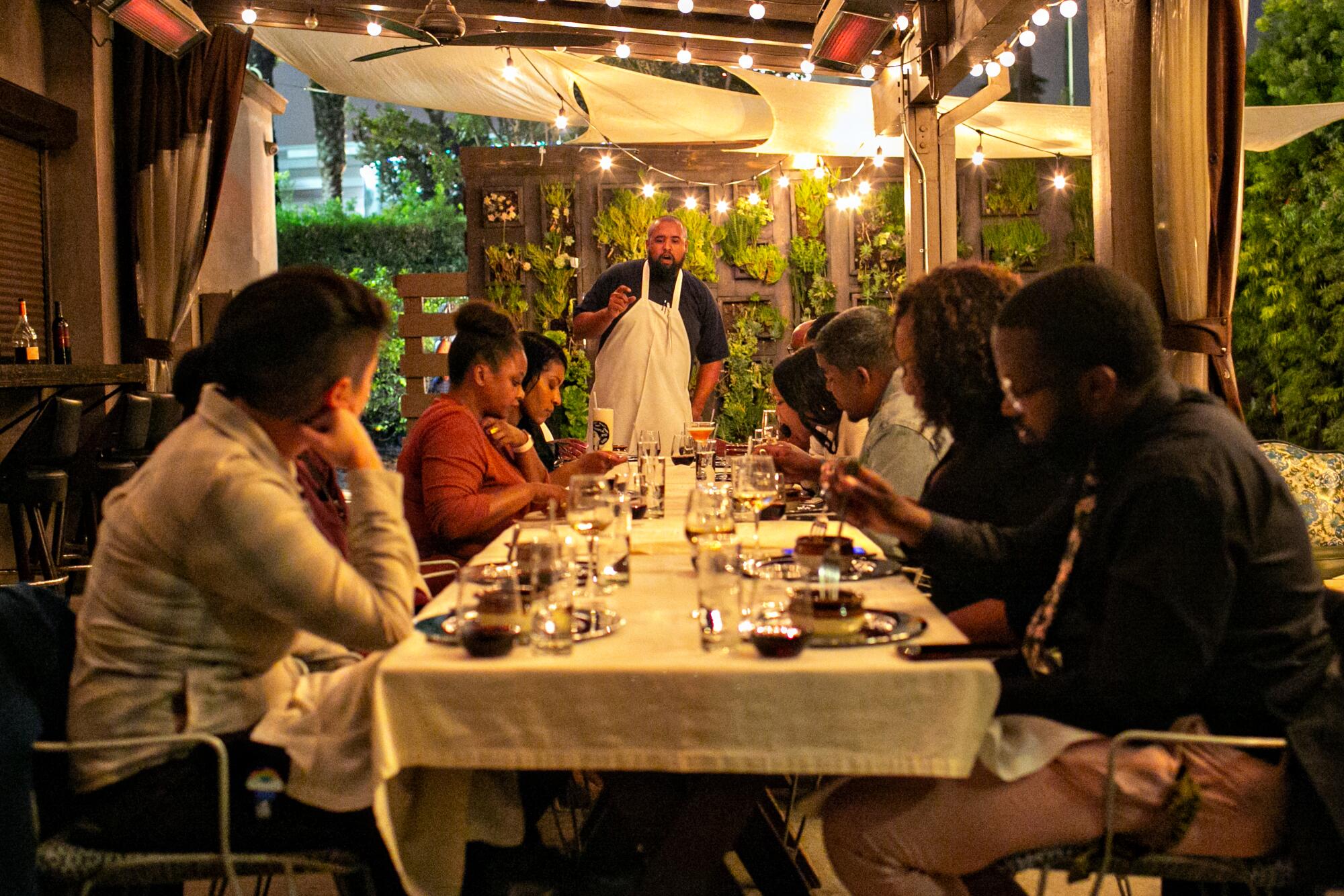
“My mom being a single parent, he ended up picking me up from school a lot of times. I would hang out with him. That’s how I figured out what I wanted to do,” Draluck explains.
He went on to attend Kitchen Academy, a former branch of the California School of Culinary Arts now owned by Le Cordon Bleu, and studied to become a pastry chef. After graduating, he worked as assistant pastry chef at Michelin-starred Joe’s Restaurant in Venice before admitting to himself that his real passion wasn’t pastries but comfort food.
That passion led him to manning the pizza ovens of Milo & Olive in Santa Monica. Next, he teamed up with friend and mentor Brian Dunsmoor at Hatchet Hall, a wood-fire cookery in Mar Vista with an emphasis on old American techniques. Draluck managed the kitchen there for five years, learning and eventually teaching the art of open-hearth cooking, and that’s where he and Dunsmoor came up with the concept for Hemings & Hercules.
They were working on Fuss & Feathers, a dinner series at Hatchet Hall that explored early American foodways, when Draluck came across the stories of the enslaved chefs and decided to develop a dinner of his own in their honor.
“Their stories aren’t well known,” Draluck says of Hemings and Hercules. “I thought it was a cool way to approach history that isn’t often told.”
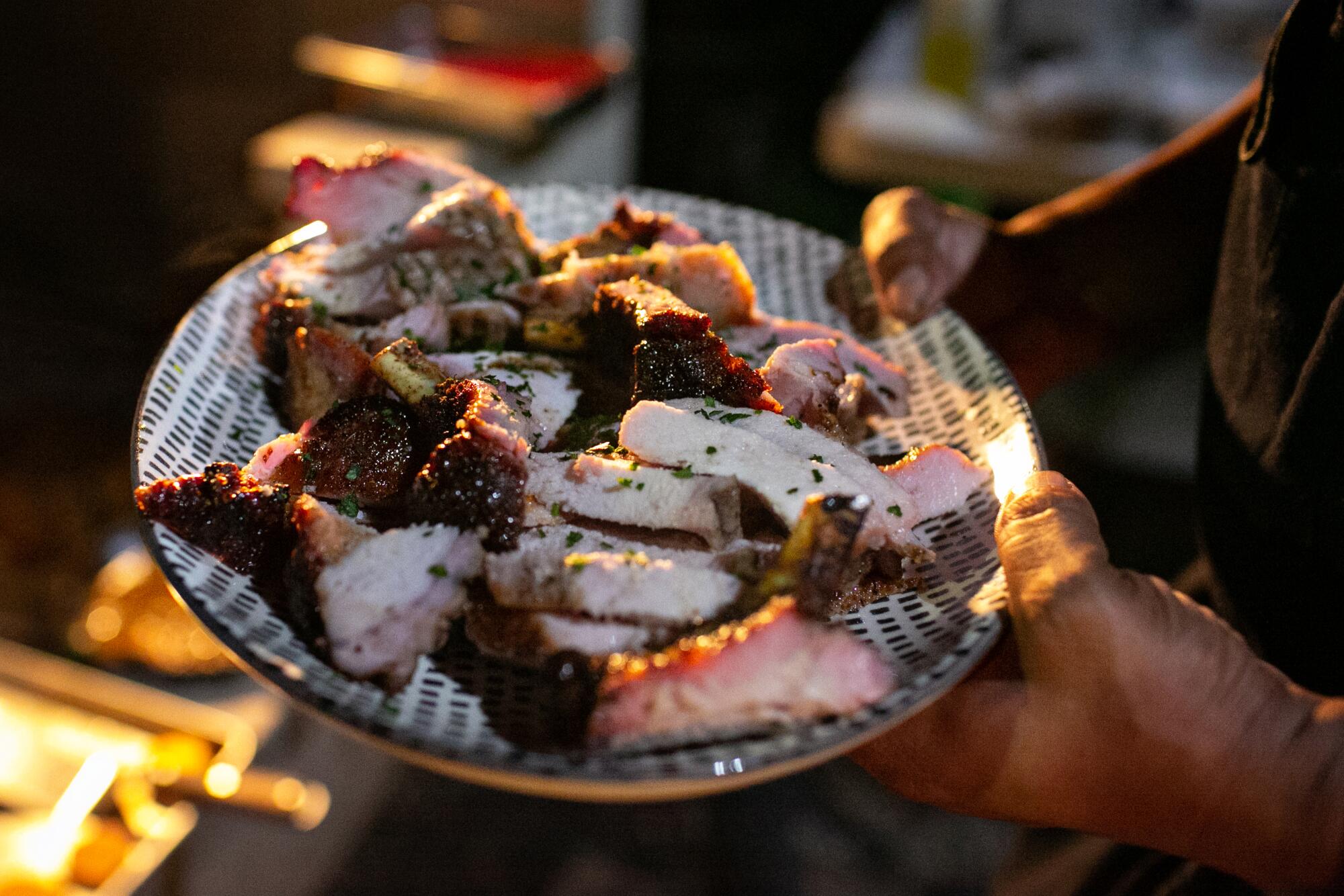
The chef left Hatchet Hall in March for his new position at Post & Beam in April, taking his signature dinner with him. According to Draluck, it was a natural next step.
“COVID obviously changed life perspectives for a lot of people, and I realized it was time to challenge myself again,” he said. “I had worked for Brian for eight years, from a line cook at the Ladies’ Gun Boat Society, all the way to Hatchet Hall. Hemings & Hercules was really the culmination of all that.”
Draluck’s work with Hemings & Hercules got another push in May when it was highlighted in an episode of Netflix’s “High on the Hog,” a series about the ways Black American cuisine transformed America.
I found at Post & Beam a dining experience as fine as nearly any other I’ve had. Hosts greeted guests with glasses of Champagne, then escorted us to the softly lighted patio where dinner would be served at one long table.
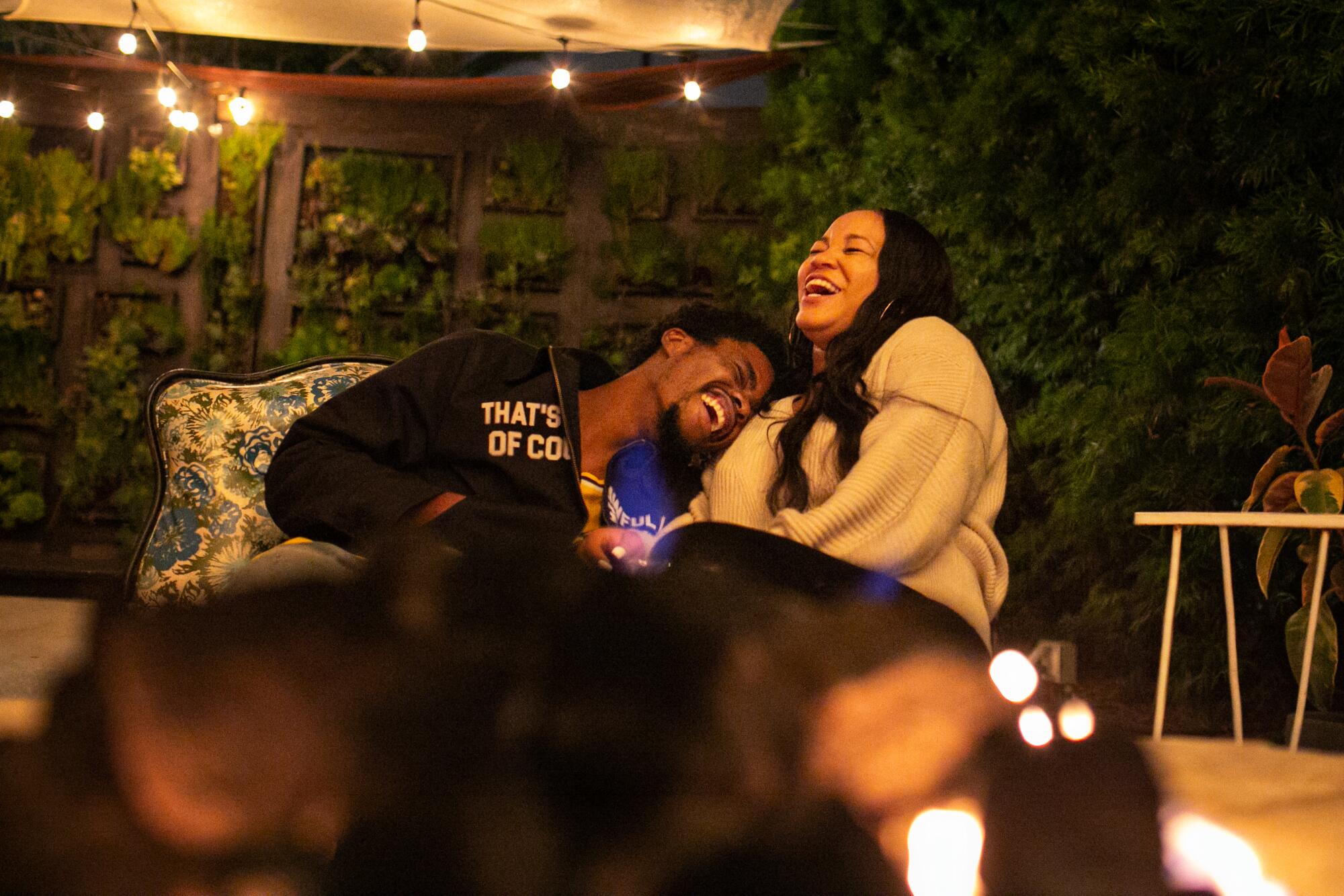
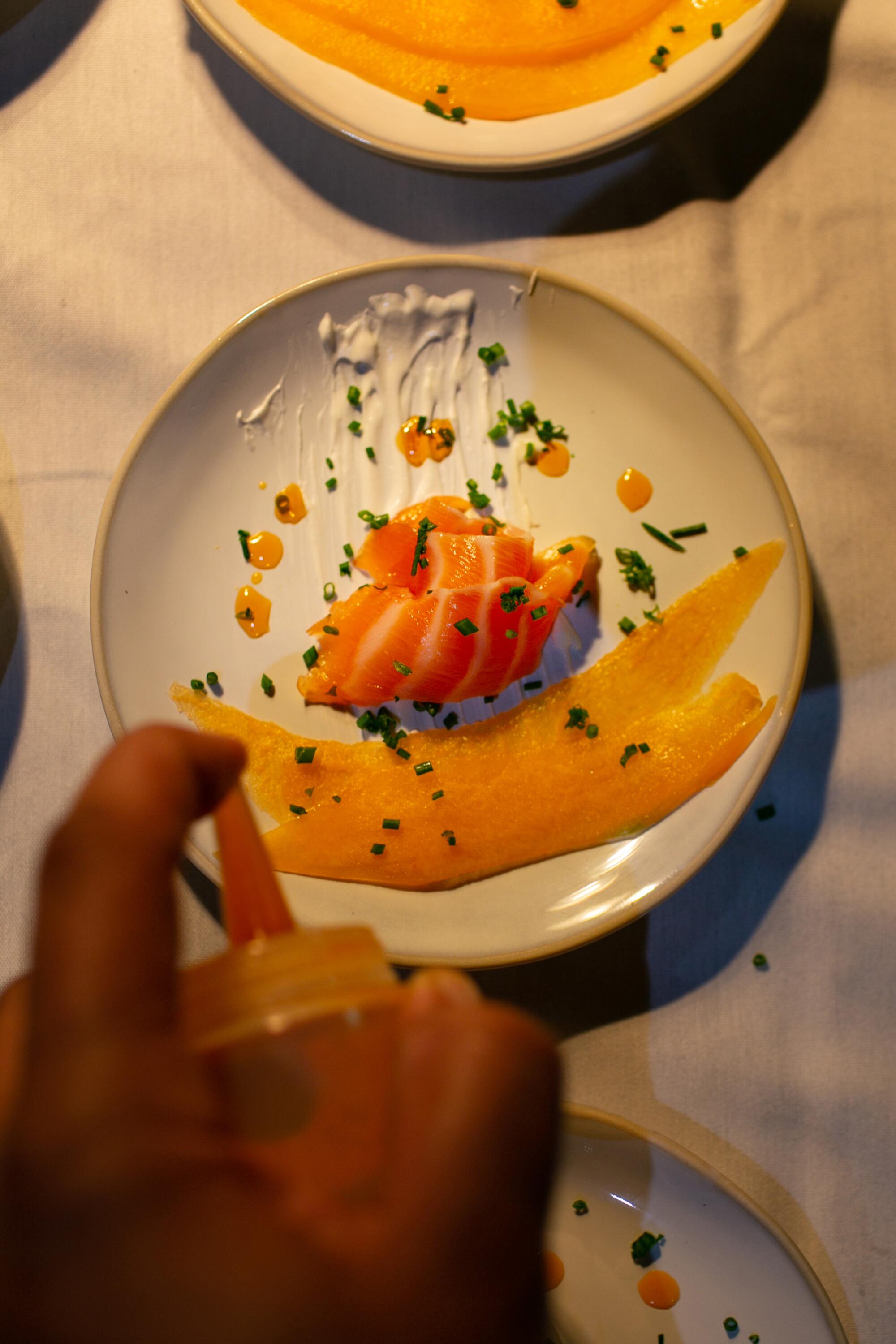
Well-dressed guests — 13 of them — mingled by a roaring fire pit before being seated: Two girlfriends traded jokes, a young couple on a date held hands, Nigerian newlyweds took selfies. Each of them was there because they’d enjoyed the soulful menu at Post & Beam before and because they were curious. We made polite conversation about the weather, our professions, the neighborhood, about nearly everything except slavery. Then dinner was served.
The first course was black-eyed pea fritters served with collard greens and red pepper jelly, followed by smoked salmon and sour melon. The third course was head cheese on grilled toast and cheddar cheese. Then Draluck served a beef pepper pot and, as the fifth course, braised rabbit with toasted middlins and vegetables.
Each dish was skillfully designed and executed, Draluck’s ambition and imagination on display.
He introduced each course with a few words about its origin. Black-eyed pea fritters could be neatly pocketed and carried into the field, he explained. Fish and melon was one of Washington’s favorite dishes. Pepper pot — a stew made of beef, vegetables and peppers — was brought to North America through the slave trade and made into a distinctively Philadelphian dish by colonial Black women who sold it on the streets.
(Draluck says the recipes were inspired by entries in the Martha Washington Cookbook, which was likely influenced by Hercules Posey, head chef to the Washingtons for 30 years. From there, Draluck took liberties — adding and subtracting elements based on plantation histories and his own interpretation of the available materials.)
There was some tension among the guests, me included, during the early courses.
At moments, it wasn’t clear which elements of the dishes came from the enslaved and which from the enslaver, by what alchemy Draluck pieced the menu together. For example, the first course’s collard greens were pickled instead of traditionally stewed, a seeming nod to kimchi. Then there’s the pepper pot, which forgoes the spice of the capsicum pepper, one of the dish’s traditional ingredients. One diner questioned Draluck about the substitution.
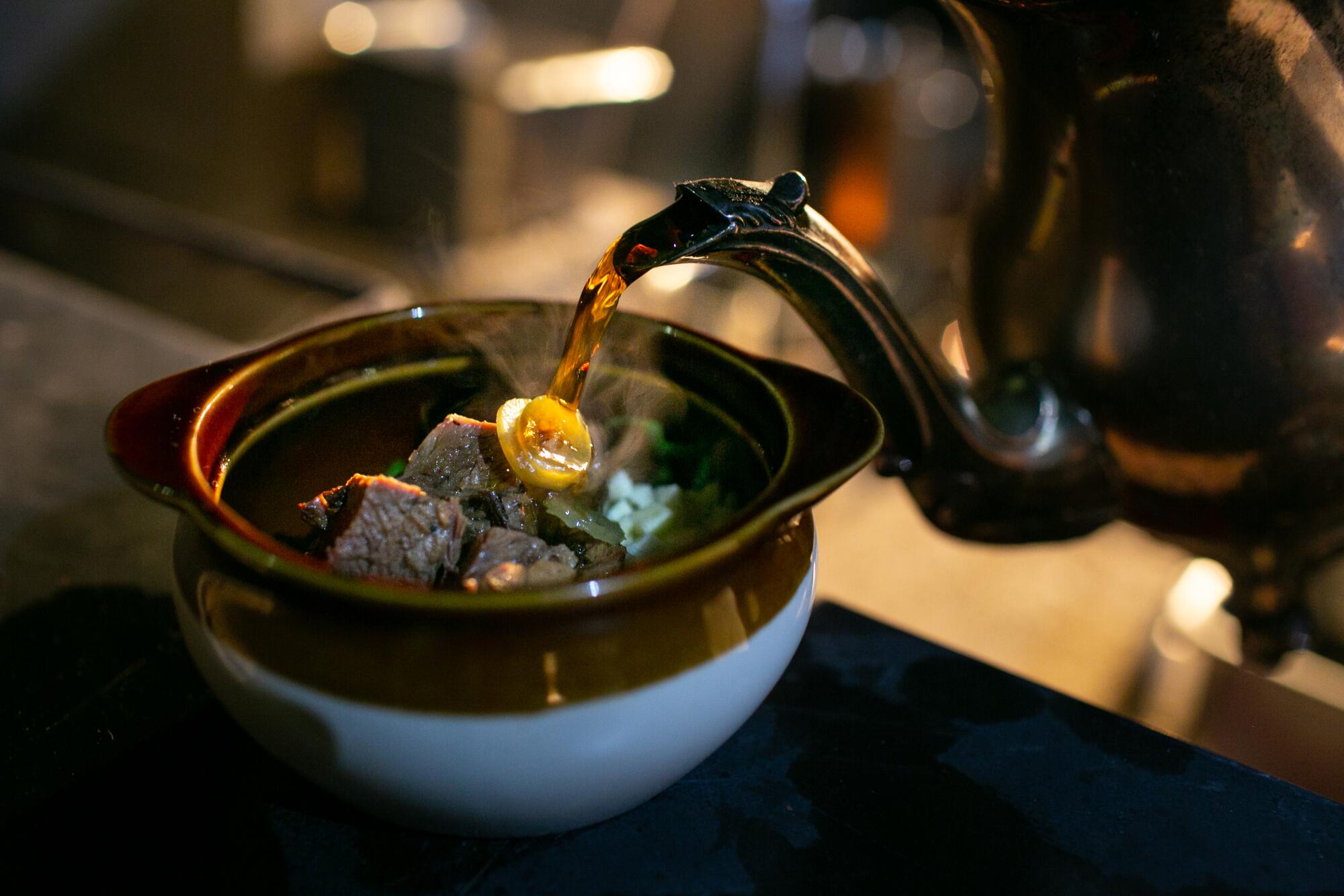
“I always try to be wary of the heat level because, from what I’ve read, they tended to be spicy,” he explains of the pepper pot. “You can blow some people’s palates out with spice, so I tried to add the element of spice without it being overpowering, just by adding the serrano vinegar.”
This mix of inspirations and approaches raises another question: Whose palate is the Hemings & Hercules dinner for? And with that, the diner is confronted with the prospect of a meal that reflects America’s complicated history, not one that resolves it.
“I created these menus for the palates of people hungry for history, not necessarily geared to any specific group or palate other than my own,” Draluck says. “As far as what I’d like to achieve, that’s to present history’s truth and to make sure these two men’s influence and importance doesn’t go unrecognized.”

Draluck understands sensitivity around the topic of slavery. “I could see how people would be uncomfortable talking about it,” he says. He hopes, however, that a meal makes it a little easier to digest. “Food can be a vehicle,” he adds.
The guests ate the first five courses quietly. We were trying, it seemed, to take it all in.
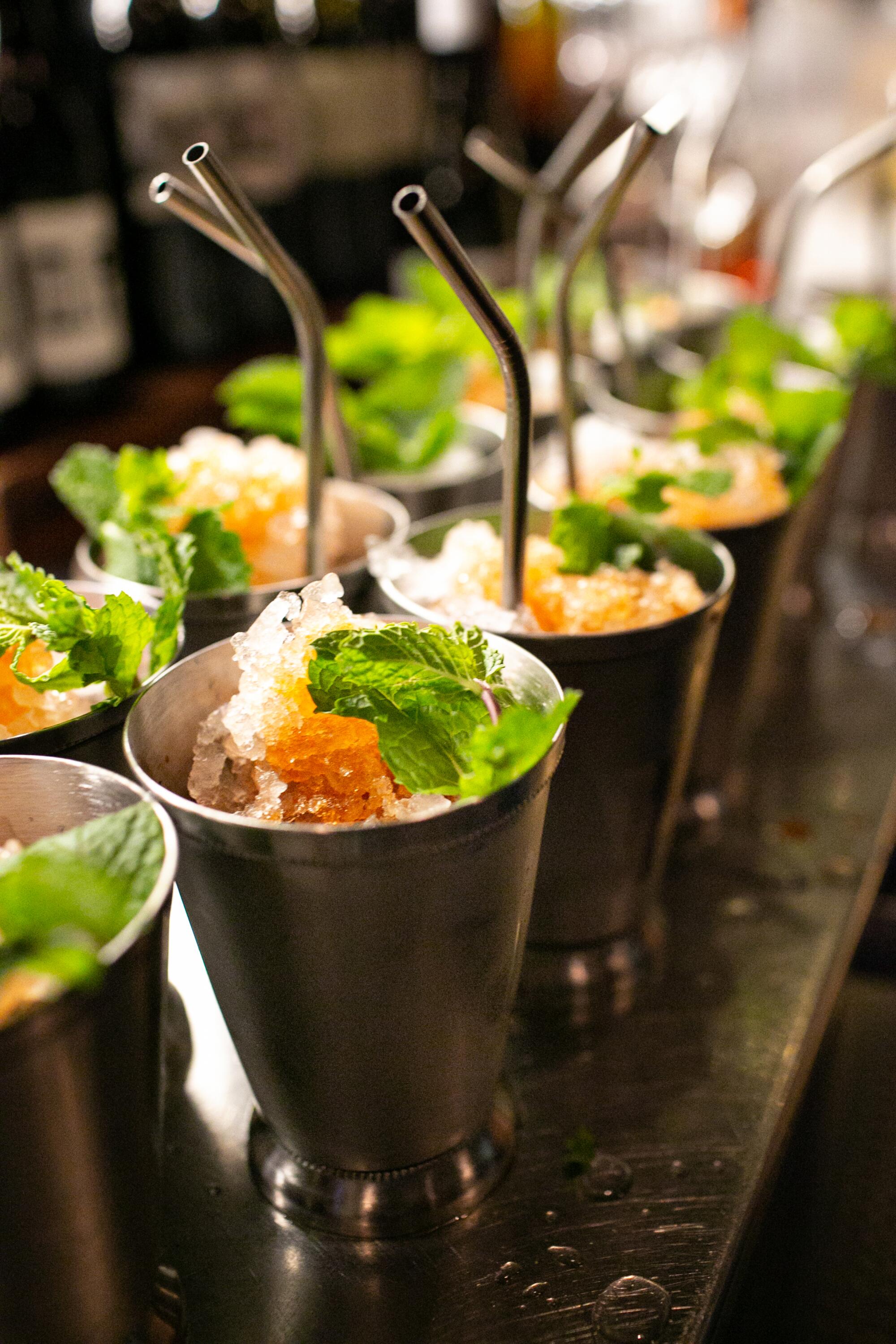
Draluck must have anticipated the tension, serving next a mint julep, a nod to Cato Alexander, a formerly enslaved man who popularized the drink in New York City. Any discomfort not washed away by the brandy-laden cocktail was quickly addressed by the main course — a whole roasted suckling pig, macaroni and cheese, fried potatoes with tomato jam and chives, wood-roasted vegetables — all served family-style.
The dishes seemed more familiar, a degree or two closer to the soul food fare associated with Black American cuisine. It’s a line Draluck walks carefully.
“Black cooks and chefs get too often pigeonholed into having to cook soul food. But it’s not all that we cook,” he says. The meal’s pivot to the familiar easily could have felt like a concession in less adept hands, but Draluck’s training and prowess over the wood-fire stove elevates the dishes — and the experience. It’as a reminder to diners that so much of what we love about Black food is not lost to time or interpretation but is still present in the meals Black folks eat on Sundays and other special occasions.
As a final touch, Draluck invites diners to watch him work. He’s not cooking inside, however, but outside behind Post & Beam, over wood fire and using cast-iron cookware — just as Hemings and Hercules did in their day.
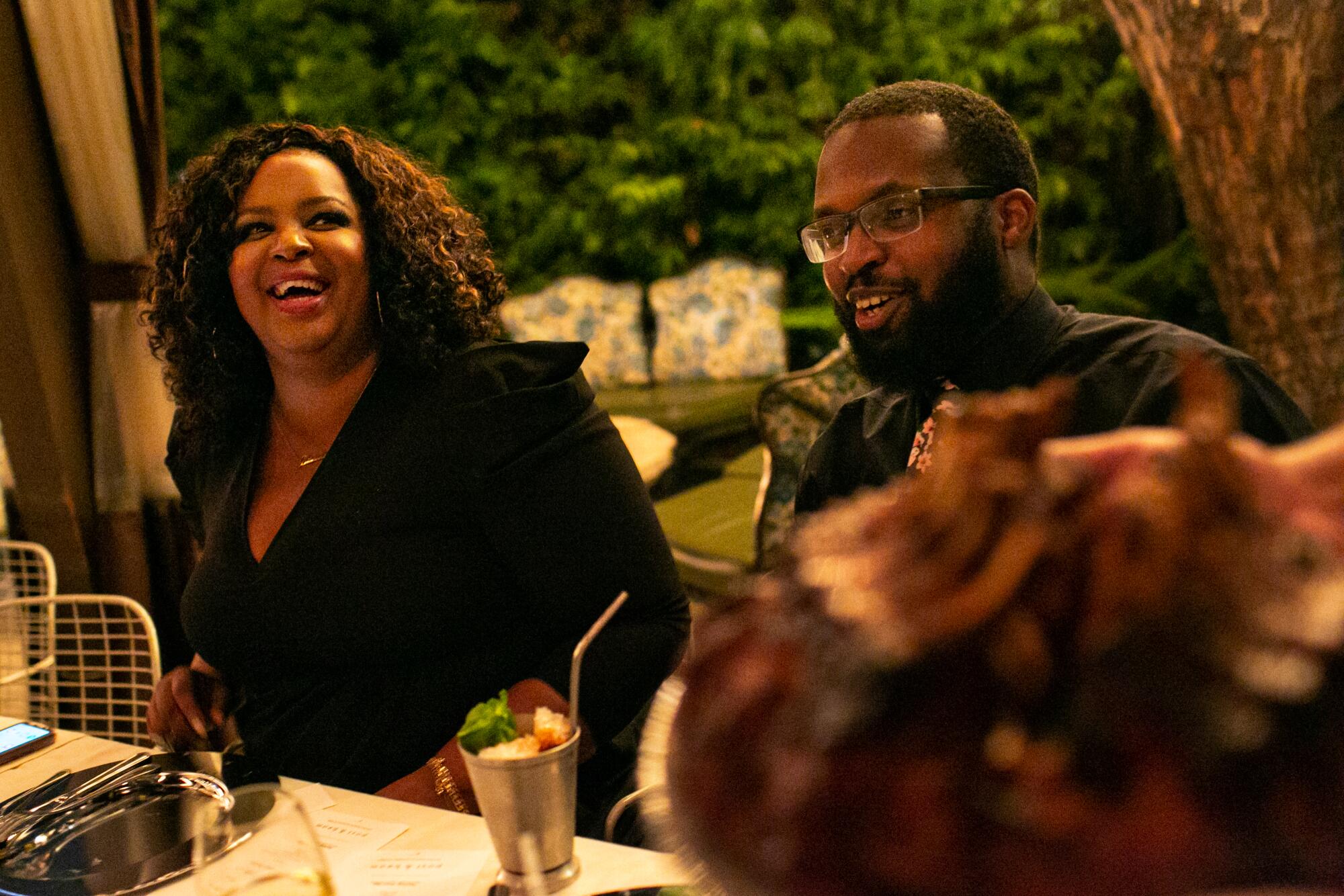
It’s unexpectedly impactful to watch Draluck, a young Black chef in complete command of his kitchen and of himself. Pouring beef broth into a pepper pot is relatively straightforward, after all, but it can be deeply meaningful depending on who’s pouring it and whose bowl is being poured into.
The Hemings & Hercules dinners at Post & Beam illustrate that point powerfully. Its dishes connect the diner to history but the full experience, hosted by a Black-owned restaurant and prepared carefully by a Black chef, grounds them in the present moment. That makes the history feel a little less heavy.
Watch L.A. Times Today at 7 p.m. on Spectrum News 1 on Channel 1 or live stream on the Spectrum News App. Palos Verdes Peninsula and Orange County viewers can watch on Cox Systems on channel 99.
More to Read
Eat your way across L.A.
Get our weekly Tasting Notes newsletter for reviews, news and more.
You may occasionally receive promotional content from the Los Angeles Times.
